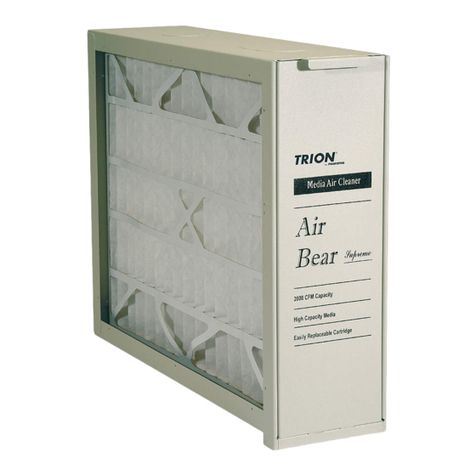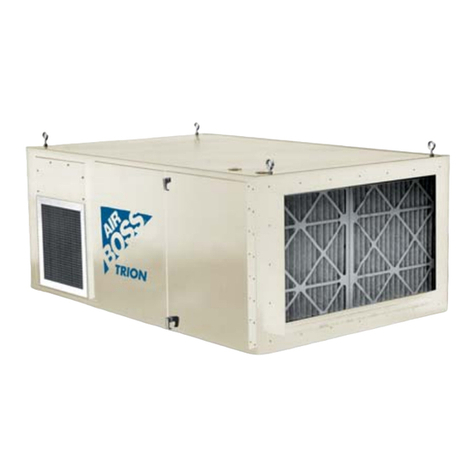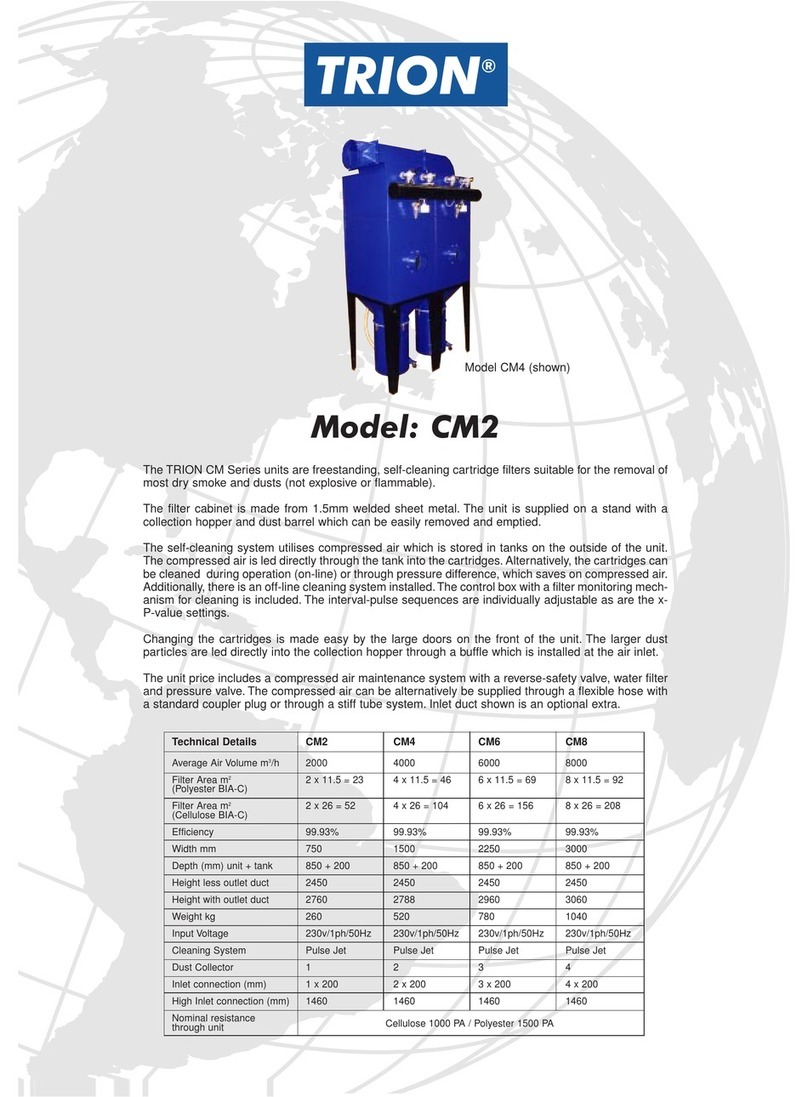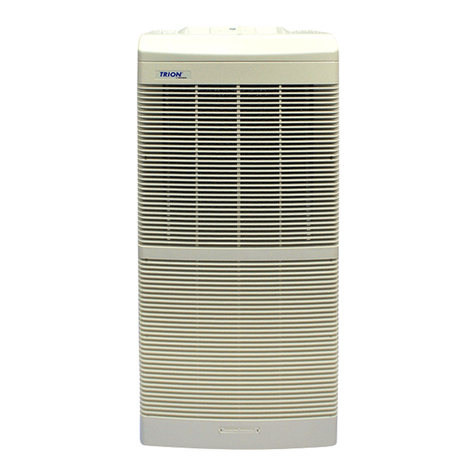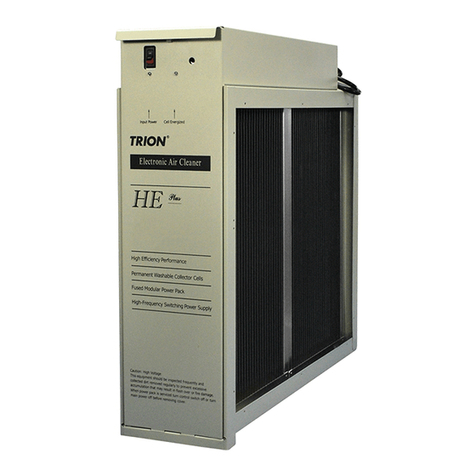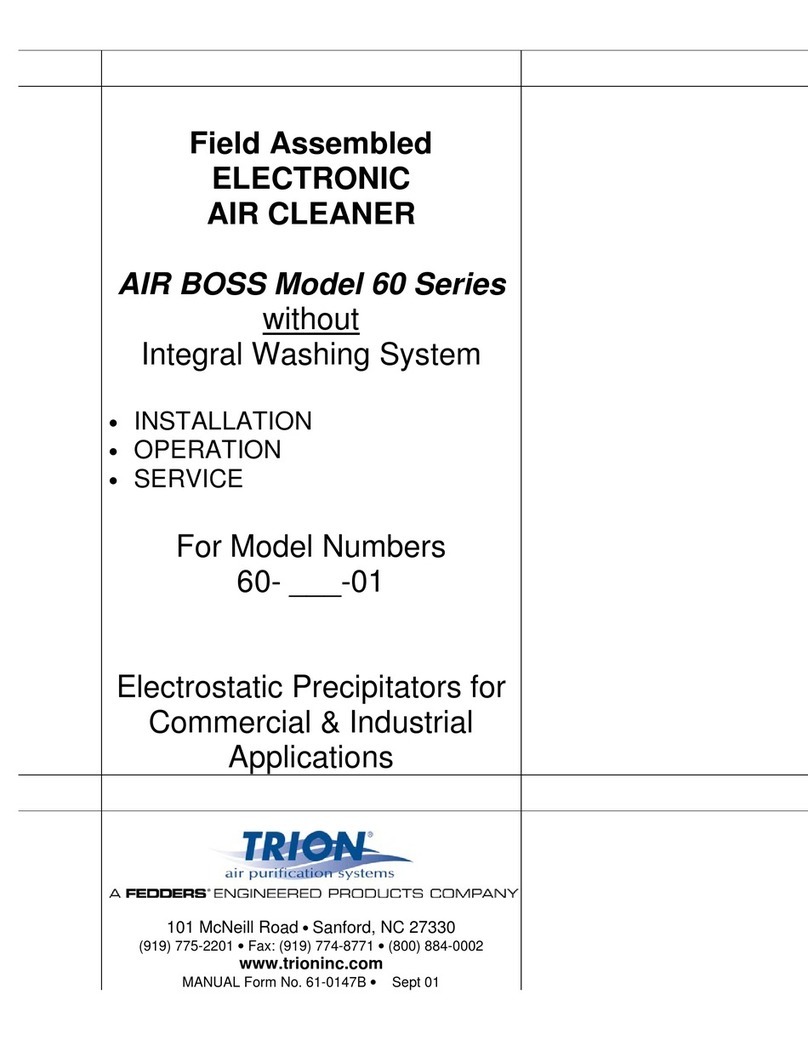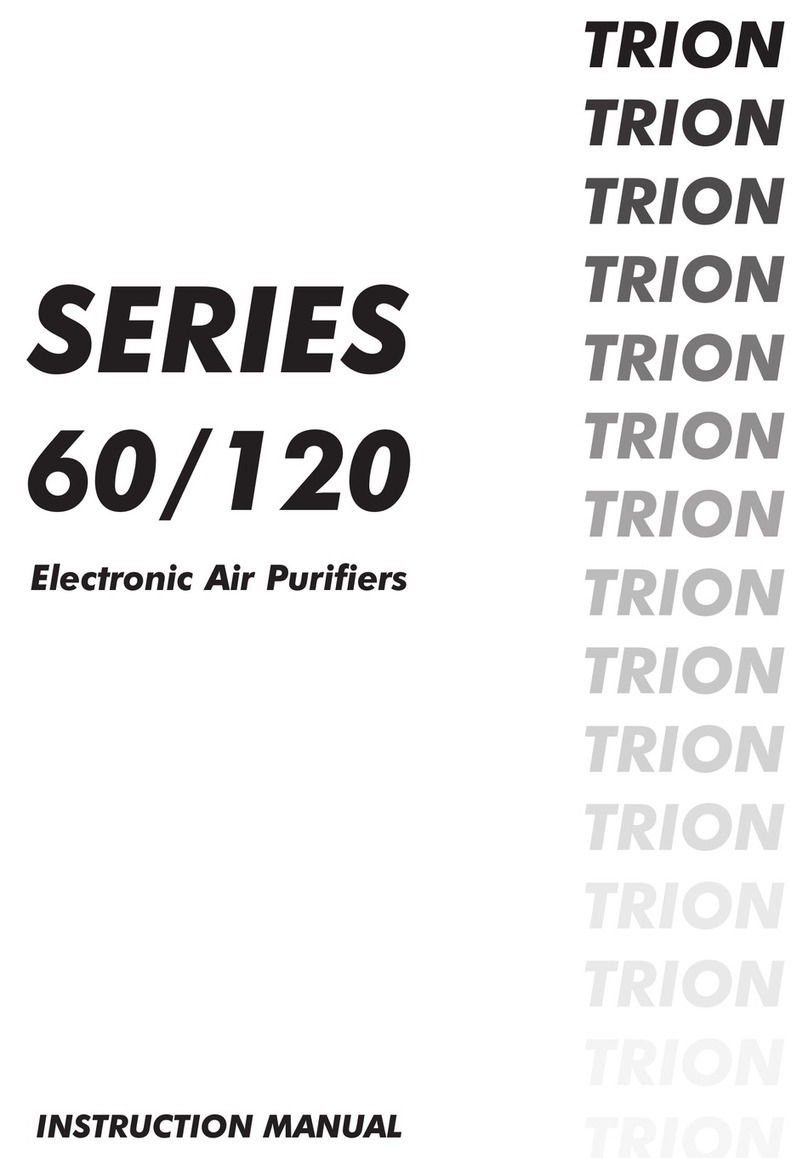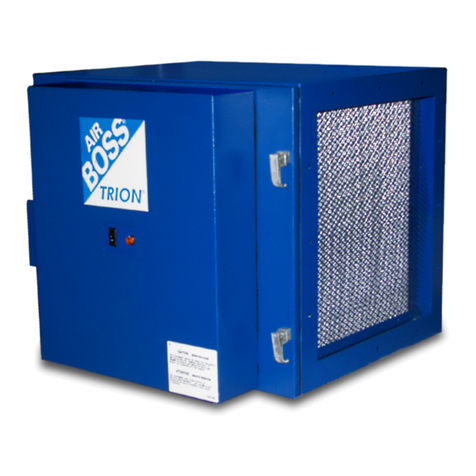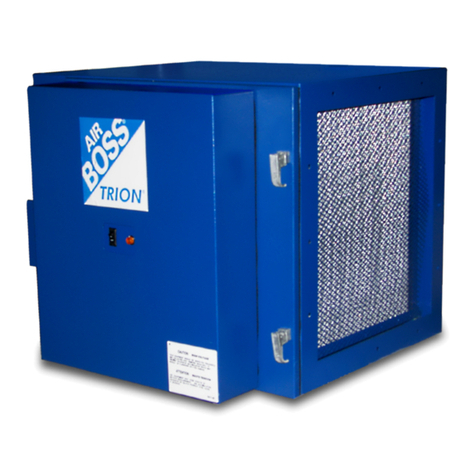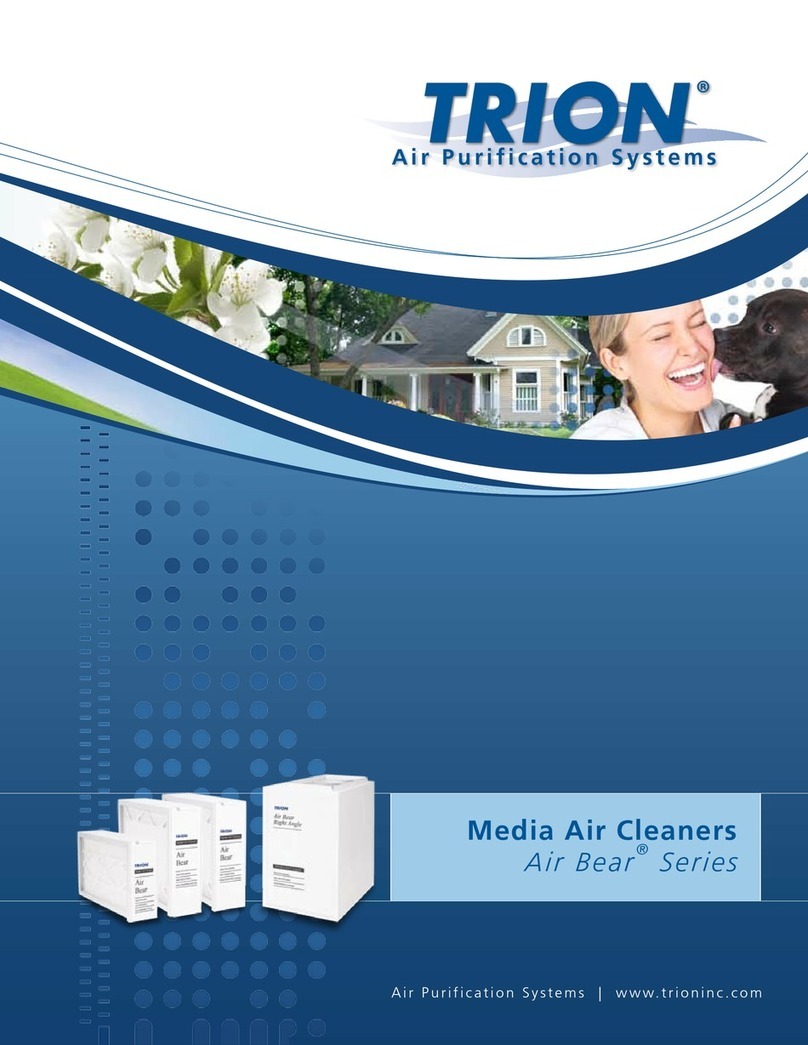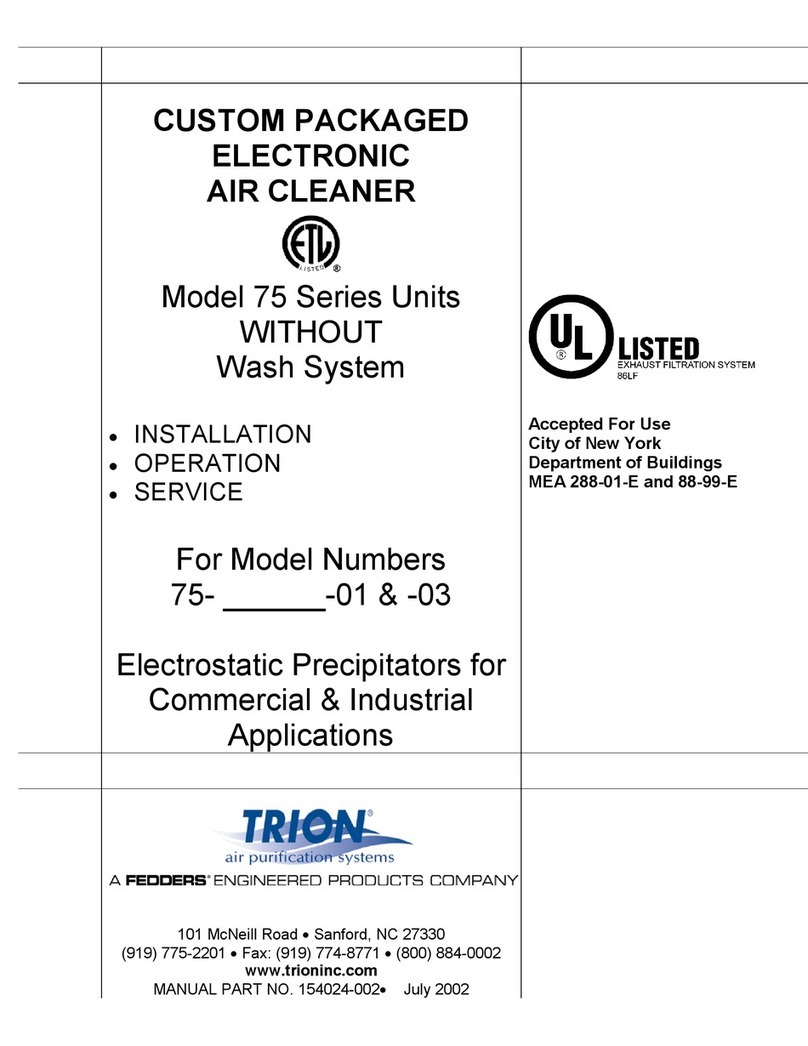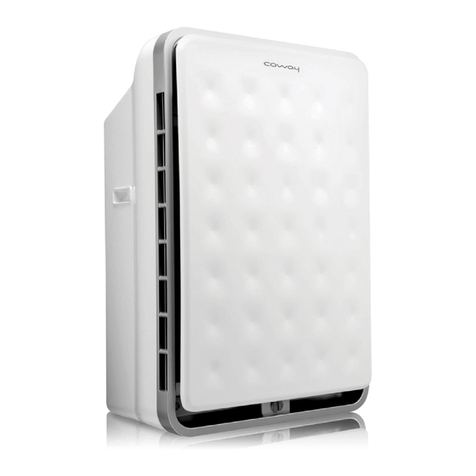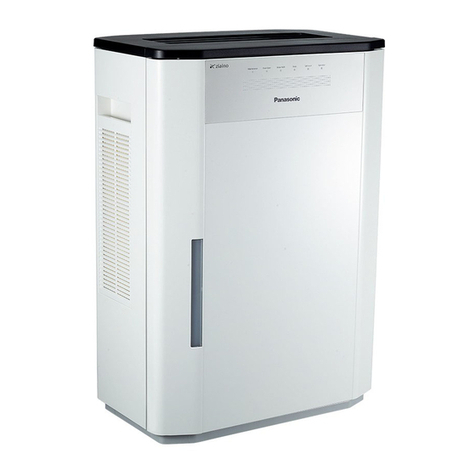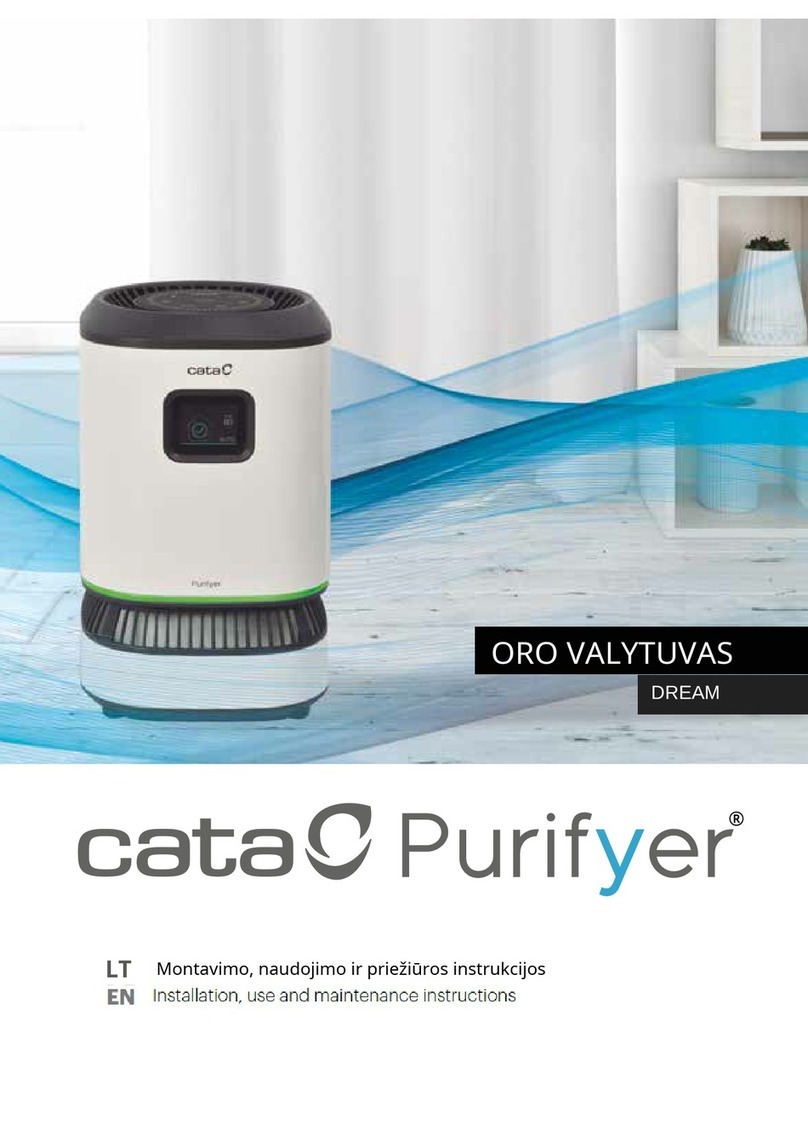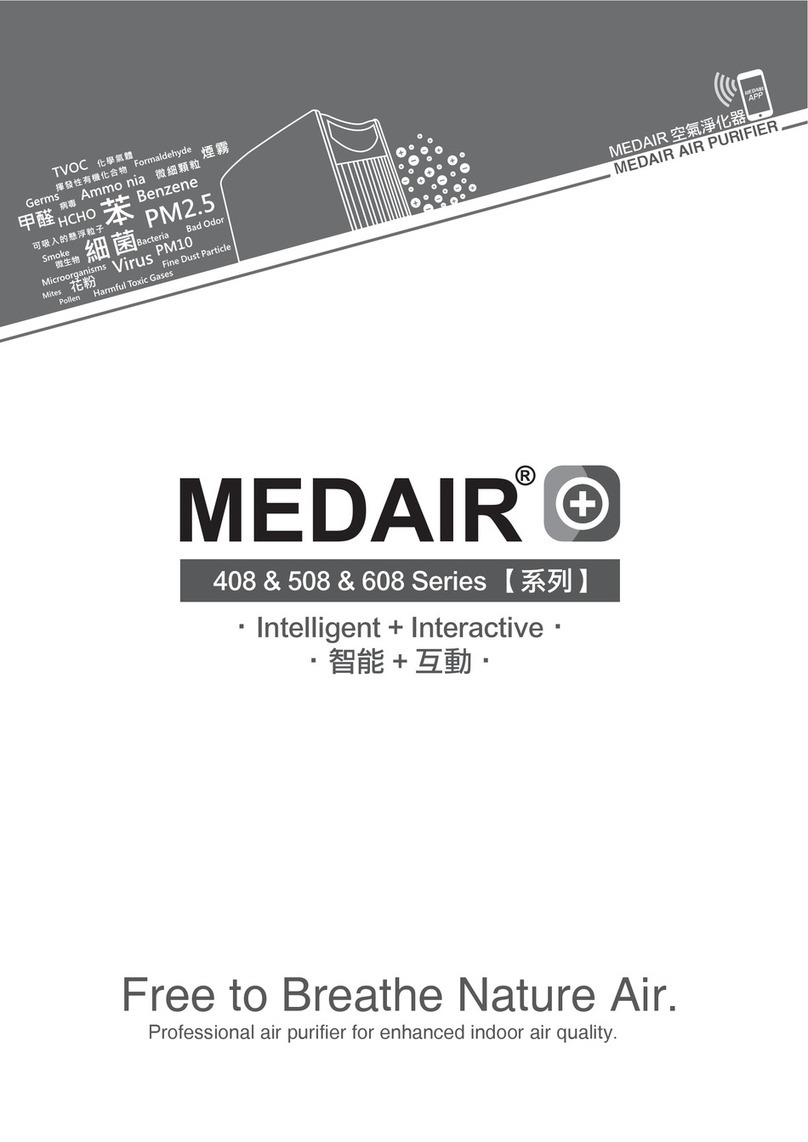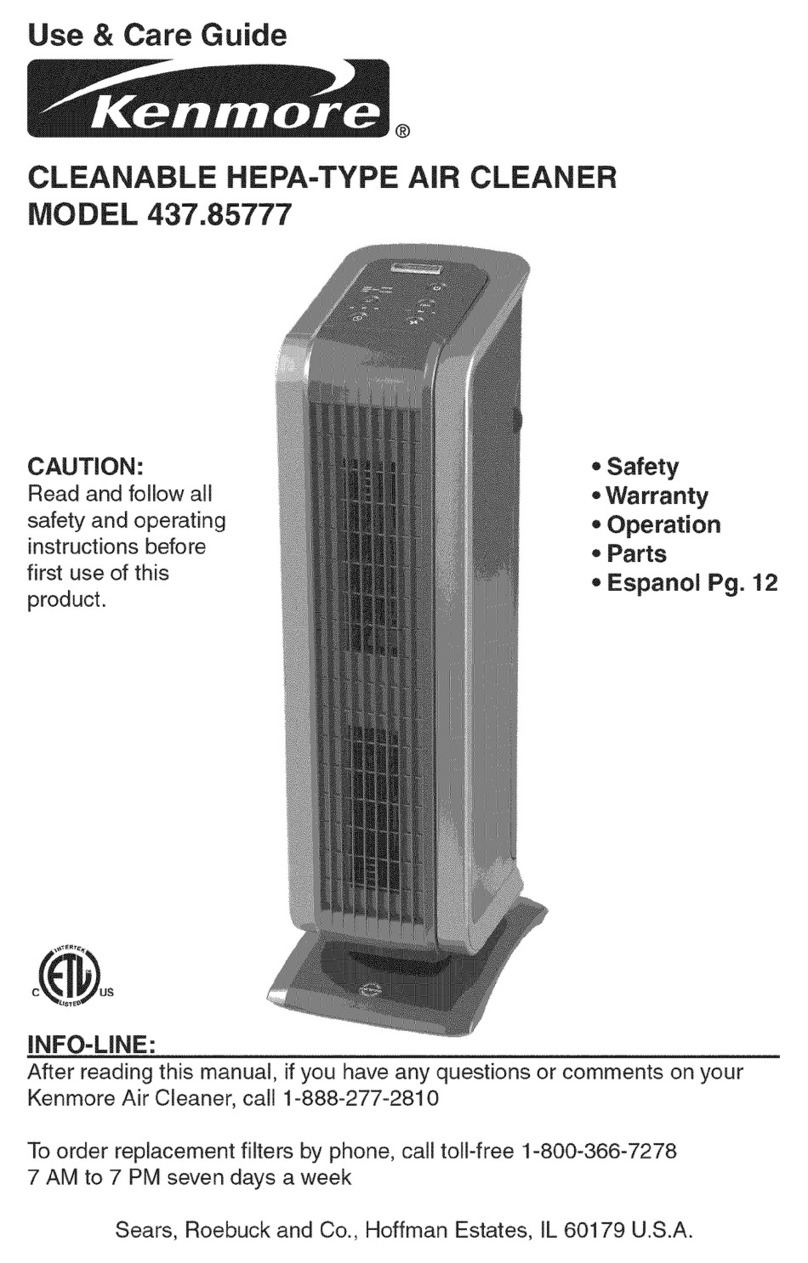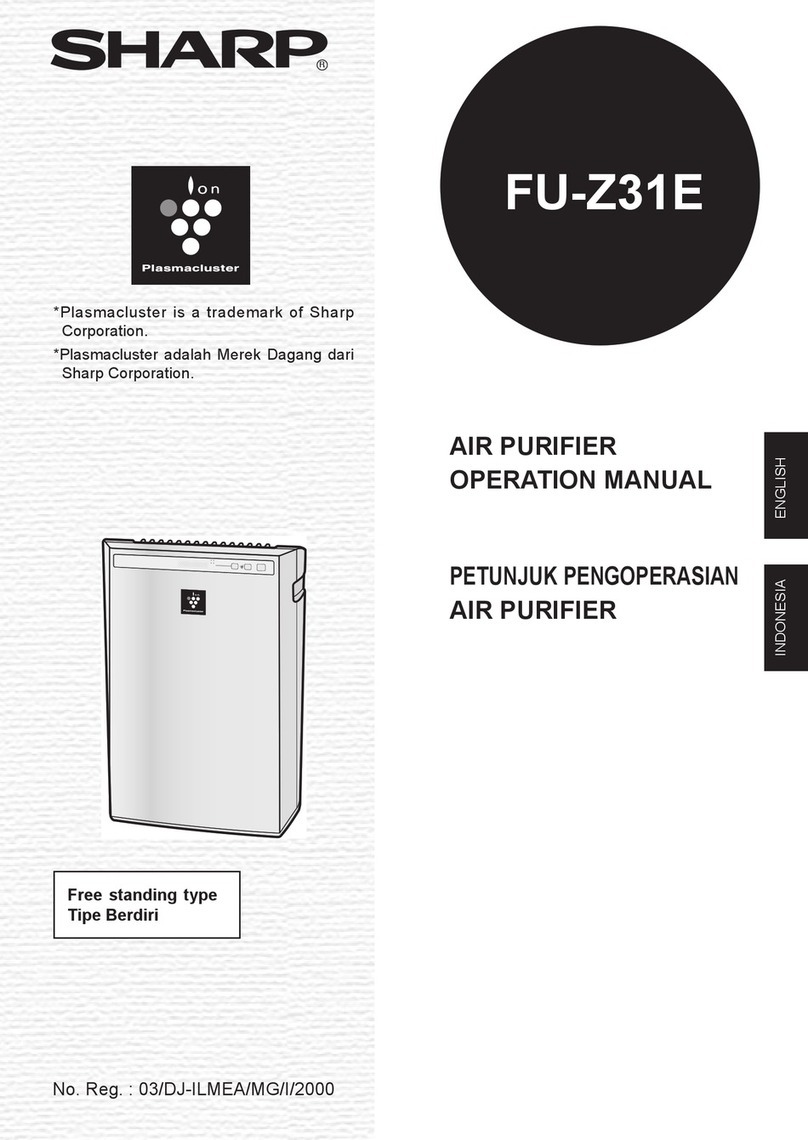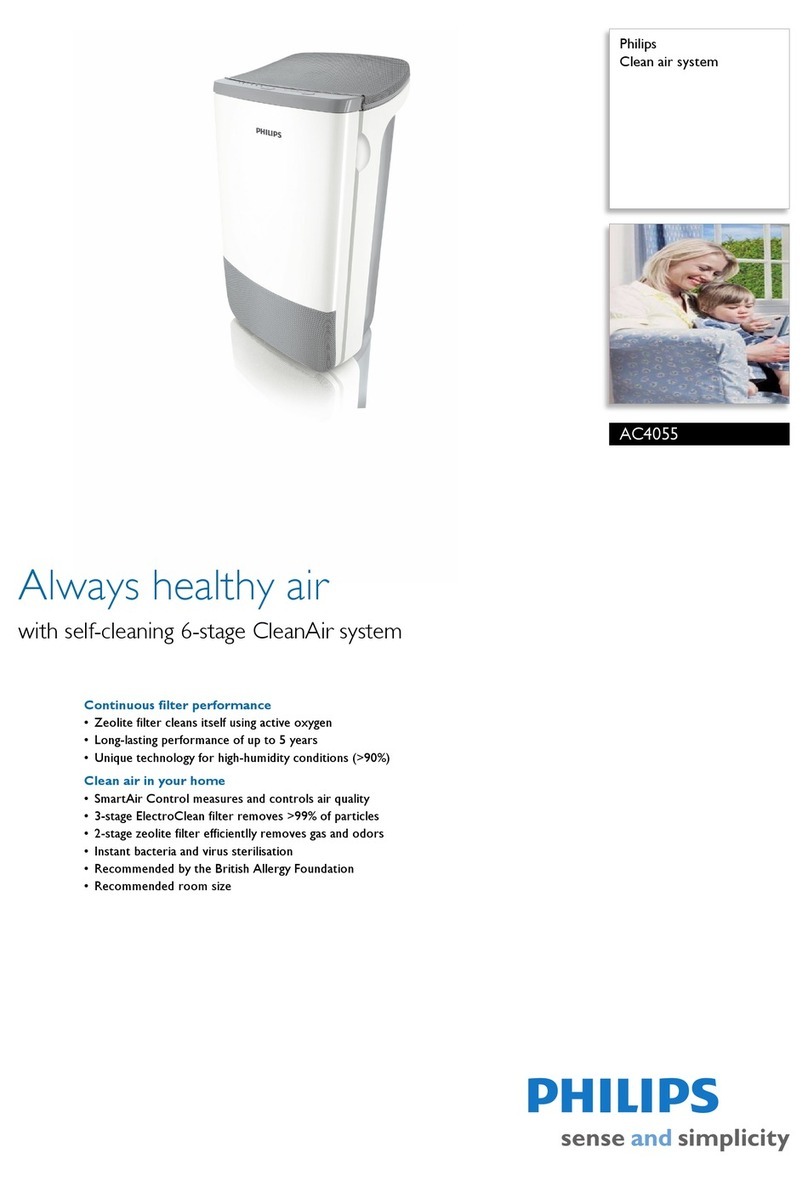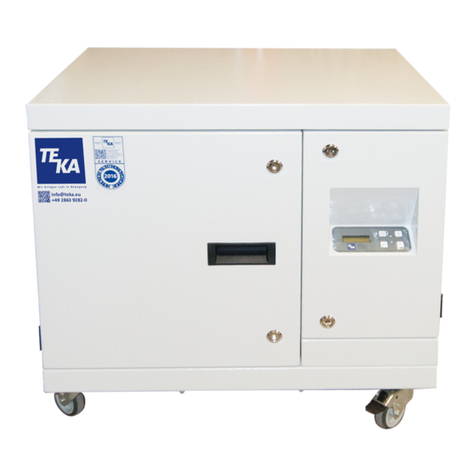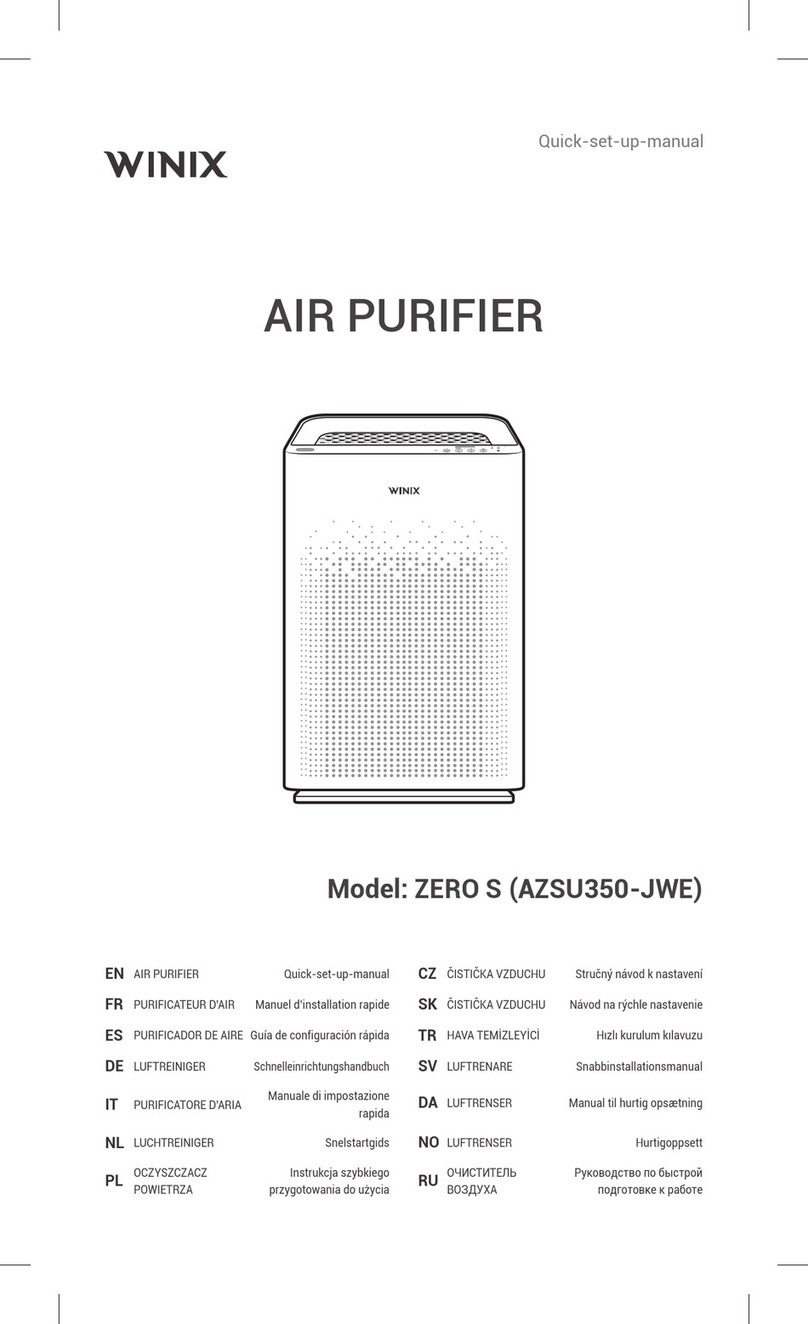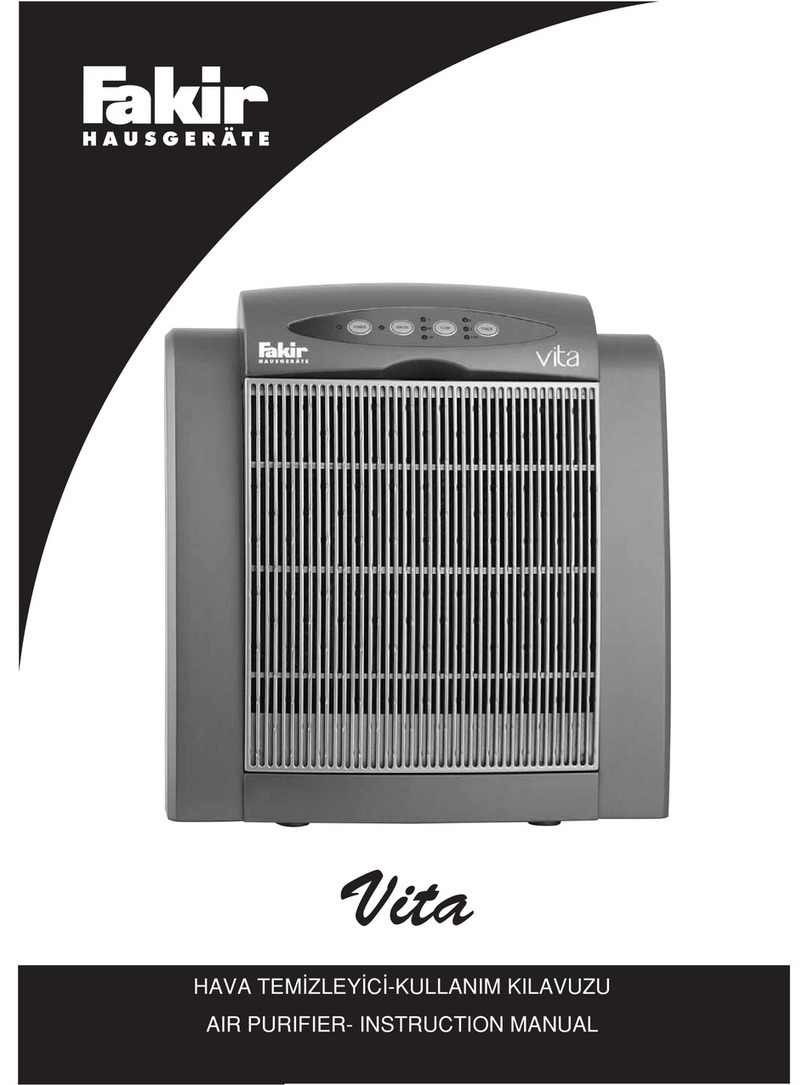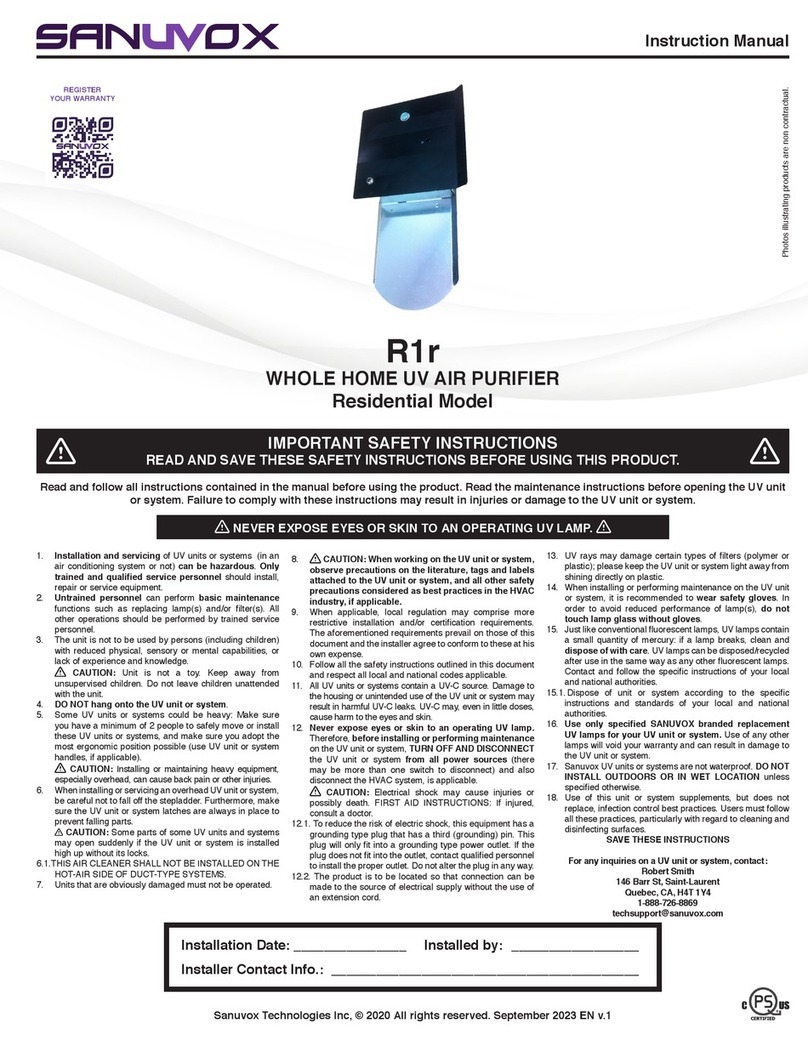
This schedule may then be altered as needed after
visual examinations of the collected material
contained on the ionizing-collecting cells. Daily
washing is not unusual for units operating on heavy
welding fume, kitchen exhaust hoods or similar
applications.
B. Detergent
Effective washing is dependent upon detergent. The
detergent reservoir should be examined on a
routine basis, a minimum tank level established and
never permitted to empty. An empty tank not only
means poor washing, but can also be detrimental to
the pump. The inside of the tank should be kept
clean, free from dirt and foreign objects. The
detergent, as supplied by Trion, is formulated
specifically for electronic air cleaners. If substitutes
are used, they must be approved by Trion, so as to
not void the warranty. They should be safe for use
in ventilation systems and non-caustic, as 95% of
the ionizing-collecting cells are constructed of
aluminum, special high voltage insulation and
gasket seals.
C. Electrical Operation
The Air Boss controller (Optional) contains a digital
LED display for kilovolt and milliampere readings.
The milliammeter should be observed on a routine
basis to be sure that it is reading within the
prescribed operating range as marked on the data
plate. For those units containing a voltmeter, the
collector voltage should be between 6 and 7 KV,
and the ionizer between 12.5 and 13.5 KV.
The ATS controller and remote PWM box both have
LED indicating lights to show power to the PWM
power supplies. Flickering or failed LED’s indicate
electrical arcing and/or power failure.
6. Periodic Maintenance
A. Water Wash System – Every 6 Months
The water wash spray pattern should be checked
on each nozzle to be sure that a full spray pattern is
developed. Distorted patterns are usually caused by
dirt in the nozzle orifice, which can be cleaned by
inserting a small gage, soft copper wire into the
orifice. If any one manifold contains several nozzles
that are restricted, the drain plug at the idler end of
the manifold should be removed, after the nozzles
have been cleaned, and the manifold flushed with
clean water. The main supply line strainer and the
strainer in the detergent system should be checked
and cleaned. Check the wash manifold drive linkage
connections and tighten or adjust as required.
B. Fire Suppression System (IF INSTALLED) –
Every 6 Months
Properly trained and qualified personnel shall
complete inspection, cleaning and servicing of the
fire suppression system.
All actuation components, including remote manual
pull stations, mechanical or electrical devices,
detectors, fire-actuated dampers, etc., shall be
checked for proper operation in accordance with the
manufacturers listed procedures. In addition to
these requirements, the specific inspection
requirements of the applicable NFPA standard shall
also be followed. If required, certificates of
inspection and maintenance shall be forwarded to
the authority having jurisdiction.
C. Controller - Every 12 Months
The inside of the controller cabinet should be
examined for accumulated dirt and dust. If required,
the components should be cleaned using a good
brand of electrical contact cleaner. All terminal
connections should be checked for securement and
tightened or reworked as required.
D. Ionizing-Collecting Cell – Every 6 to 12 Months
Remove and inspect the ionizing-collecting cells for
excessive dirt accumulations not removed by the
integral washing system. Manually clean as
required in a soak tank, commercial car wash, or
with a pressure hose or pressure cleaner using a
low pressure setting. At this time, particular care
should be taken in cleaning each of the insulators.
WARNING:
DO NOT USE HIGH PRESSURE STEAM CLEANING
EQUIPMENT TO CLEAN CELLS. THE EXCESSIVE
HEAT AND PRESSURE WILL CAUSE THE PLATES
TO WARP AND IN TURN POSSIBLY CAUSE
EXCESSIVE ARCING.
E. Motors – Every 24 Months
As the operation of detergent pump motor is limited,
frequent oiling is not required. Lubricate with several
drops of SAE 10 motor oil every two years. DO NOT
OVER OIL. The manifold drive motors are factory
lubricated for life and do not require oiling.
F. Filter Devices – Every 4 to 6 Months
Hoods, impingers, metal mesh filters, ducts and
other appurtenances shall be cleaned to bare metal
at frequent intervals prior to surfaces becoming
heavily contaminated with grease, oil or other
contaminant. It may be advantageous to clean
readily removable items, such as impingers, metal
mesh filters or other permanent filter devices in a
soak tank, with a pressure hose or pressure cleaner
low setting. After cleaning to bare metal,
components shall not be coated with powder or
other substance.
When a cleaning service is used, a certificate
showing dates of inspection and/or cleaning shall be
maintained on the premises.

















